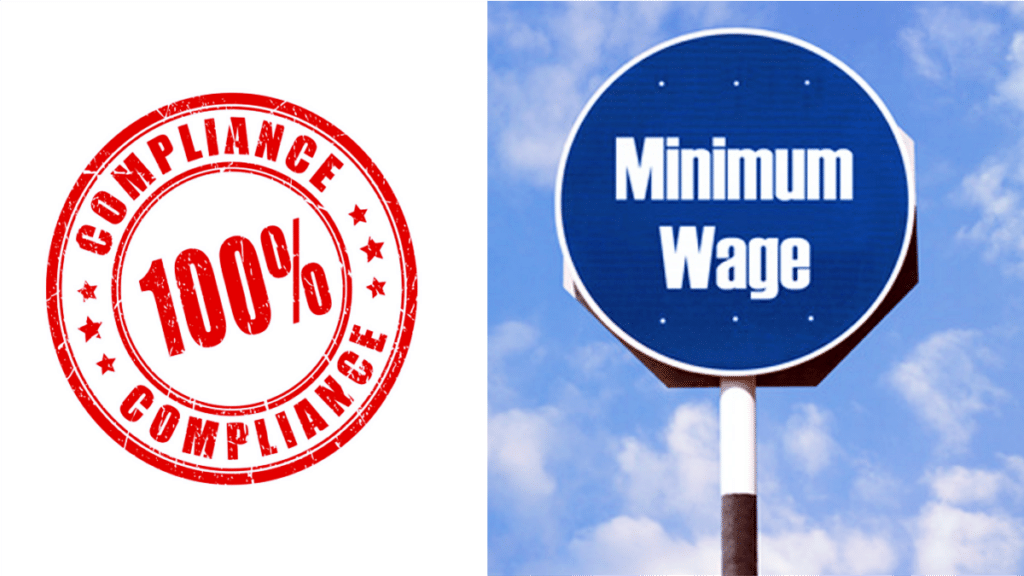It Is Time to Schedule a Minimum Wage Audit – 3 Important Steps
Estimated reading time: 5 minutes
(Editor’s Note: Today’s article is brought to you by our friends at Poster Guard® Compliance Protection, a division of HRdirect and the leading labor law poster service that gets your business up to date with all required federal, state, and local labor law postings, and then keeps it that way — for an entire year. Enjoy the article!)
In the United States, the federal minimum wage is $7.25/hour. It’s been that since July 2009. However, there have recently been a TON of changes to the minimum wage on a state and local level. As of today’s article, 30 states have a minimum wage higher than federal law. And, cities and counties in over 80 localities have adopted minimum wages above their state’s minimum wage.
More changes are coming. Starting in January 2023, 27 states plus the District of Columbia enacted new wage changes. In the near future, changes will take place in Connecticut, Nevada, Oregon, and Florida. In addition, 40 cities/counties have increased their wages (BTW: 28 of those locations were in California). Oh, and certain federal contractors are now required to pay $16.20/hour.
Bottom-line: There are a lot of changes going on.
This is really important to understand because if there’s a difference in minimum wage laws, employers are required to pay the most generous rate to non-exempt workers. Here’s a quick quiz: if I’m a non-exempt employee working in Denver, Colorado. How much should I get paid per hour?
- Federal minimum wage $7.25/hour
- Colorado minimum wage $13.65/hour
- Denver minimum wage $17.29/hour
Yes, the correct answer is $17.29/hour. And don’t forget that applies to overtime pay as well.
I’d like to believe that employers know when they’re paying more than federal minimum wage. But with all the changes going on, employers need to ask themselves if they have a process in place to make sure they stay current with all these wage changes. Especially if the organization has employees who work remotely.
Keep in mind, if the employee relocates, their rate of pay might change. Using our non-exempt employee in Colorado example, let’s say the employee has been living in Telluride and relocates to Denver. Employers might be certain they’re paying someone more than $7.25/hour. But if the employee is making $15/hour, did the organization know they should be making $17.29/hour?
That’s why it might be valuable to do a minimum wage audit. And I want to clarify here, that we’re only focused on minimum wage. Organizations might be doing compensation related audits for other reasons like verifying exempt / non-exempt status or evaluating pay equity. Those are also valuable reasons to audit compensation and they might factor into this conversation. But let’s focus on minimum wage for now.
How to Conduct a Minimum Wage Audit
To conduct your wage audit, here are a few steps to consider:
Find a reliable source for information. Our friends at Poster Guard have developed a Minimum Wage MonitorTM Premium Service. This online tool provides employers with a color-coded map that displays minimum wage data. It also shows past and future wage rates. This could be very helpful for future planning and budgeting purposes. The tool also provides email notifications when minimum wage laws are passed or changed so employers can start preparing for the new rates to take effect.
Start looking at employee wages in relation to the law and your internal practices. Once you have a good information source, organizations can start conducting their wage analysis. This isn’t just an exercise in “are we or aren’t we” paying more than minimum wage. Employees will know what the minimum wage is…they do not have to talk to someone in the breakroom to figure out if they’re not being paid fairly (given a minimum wage increase). Oh, and I don’t want to get off-track, but if you’re state/location requires pay transparency in recruitment marketing, then you’ll want to make sure you are disclosing the correct pay rate.
Determine if there are “pay gaps” that need to be addressed. Keep in mind that you’re not simply evaluating new employee pay. Changes in minimum wage impact other things, like wage compression. Just as a reminder, wage compression happens when a new employee is paid nearly the same amount as another employee with longer tenure. An example would be if I hire a new room attendant starting at $15/hour. But a room attendant with 5 years of service is making $15.50/hour. The organization will need to find the budget, put together a wage adjustment schedule, and plan to speak with employees about getting their pay on track.
As I mentioned earlier, it’s possible that the results of this audit need to be considered with other pay related audits. Of course, if you have any questions along the way, don’t hesitate to consult with your legal counsel because my guess is what we’re seeing right now with wage changes isn’t going away anytime soon.
The last thing any company wants is to be considered “out of touch” because they don’t know what the current minimum wage is for employees. Beyond appearing to be clueless, companies can’t afford to risk the potential wage and hour or Fair Labor Standards Act (FLSA) lawsuits from their employees. Minimum wage laws are changing regularly. Dare I say frequently. Get good information so you can pay people properly.
P.S. One more thing. We spent our time today talking about minimum wage changes from the perspective of employee pay. Keep in mind that most – but not all – of these changes require new labor law posters. Don’t forget that Poster Guard’s Poster Compliance Service keeps you in compliance by providing automatic replacements (at no additional cost) every time a mandatory change occurs.
56